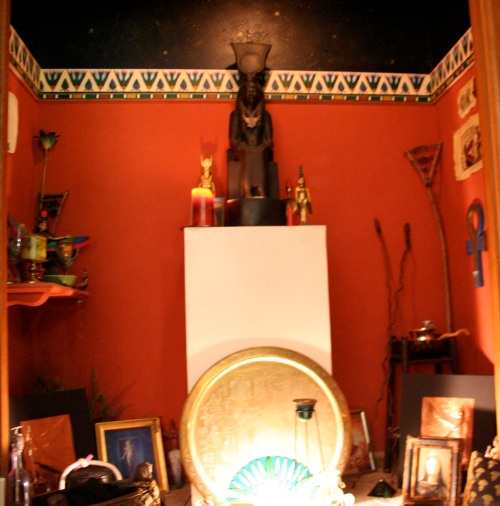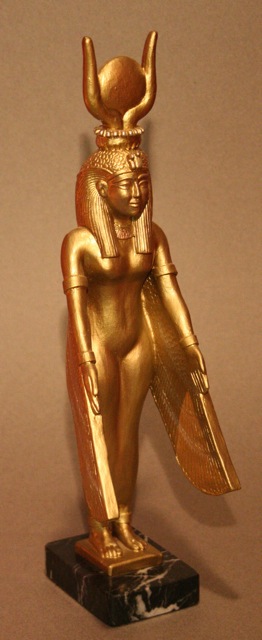Have you ever had to answer questions explaining all those images on your altar to some members of the major monotheisms? You know. The idolatry question.

If you’ve ever found yourself in that situation, you probably ended up saying sometime like, “I don’t worship the statue. I worship the Deity represented by the statue.” It seems so simple and obvious. And it is. For the most part.
But when it comes to ancient Egyptian tradition, things do get a bit more interesting.
As you probably already know, images were extremely important in Egyptian tradition. Images, and most especially the sacred images of the Deities, could become vessels for the indwelling of the Divine presence. Once the proper rites were performed, the Deity was, in some sense, alive within the image and became a fit representation of that Deity to the worshipper.

The sacred image provided a way for the Deity to be physically present in the material world. Jeremy Nadler, one of my favorite writers on the subject, says in his Temple of the Cosmos, “The gods could not be distinguished from their statues or images, and to have done so would have been as false to the ancients as it would be questionable for us moderns to distinguish between a person and his or her body.”
And the Egyptians weren’t the only ones. In Apuleius’ tale of initiation into the Mysteries of Isis, he tells us that he repeatedly stood before the temple statue of the Goddess and worshipped Isis in Her image. “I was wrapt in my gaze on the image of the Goddess,” he writes. Later in the story, he describes a deeply emotional experience he has had while praying before the statue. “I laid myself down at last in obeisance before the Goddess and for a long time wiped Her feet with my face. Then, with welling tears, breaking my speech with frequent sobs and swallowing my words, I addressed Her.” In describing an earlier procession of the Goddess, Lucius mentions the images carried by special bearers and which he calls “breathing effigies.” Very much in the Egyptian tradition.
The idea that a Divine spark can become attracted to and activated in a special image passed into Renaissance Europe via the Hermetic tradition; a tradition deeply rooted in Egyptian as well as Greek philosophy. The Qabalistic tradition has handed down the idea of the golem, a being made from clay that the Rabbis activated by prayer and ritual. In alchemy, the homunculus, or “little man,” is a similar concept. The idea that certain images can be enlivened or charged by the Divine comes into modern magical religions as talismanic magic in which special symbols and images (talismans) can be consecrated with Divine energy. The word talisman comes from the Greek for a perfect or completed object; thus it would be quite reasonable to think of your sacred images as talismans.

Some cultures believe that God, the Deities, or the Divine Spirit is contained within all things. These animistic, pantheistic, or panentheistic cultures understand the world as brilliantly alive and sacred. On this subject, the Greek philosopher Plotinus wrote, “there is nothing which is without a share of soul.” Iamblichus, a Neoplatonist philosopher, joined him in finding the world alive, ensouled, and sacred declaring, “as to the first principle, that the gods dwell only in heaven, it is not true. Everything is full of them.” Many indigenous cultures, too, share this view, as do many modern Neo-Pagans, Polytheists, Wiccans, Goddess devotees, and more. If we accept this, then even the materials with which our sacred images are constructed contain a bit of the Divine within. And they will only be more powerful when specifically activated to receive an influx of the Divine.
The large image of Isis that sits upon my altar as well as the small golden one above have both been enlivened through ritual and invocation. (Isis Magic includes a ritual for enlivening your own sacred image in the Magician chapter, if you are so inclined.) As living images they serve as a focus for my meditation and prayer. I can feel Her in the image, especially if I have been spending a lot of time in the shrine with Her. I honor that spark from the heart of the Goddess that resides within this sacred image—as within All Things. The image is a focus for prayers and a conduit for the blessing of the Goddess. The spark within it lights the fire of love for the Great Goddess Isis—Whose image is at once everywhere and nowhere.




